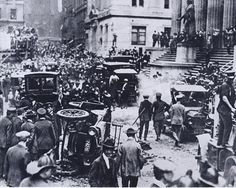P. T. Barnum and his circus start their first tour of the United States.
P.T. Barnum, whose full name was Phineas Taylor Barnum, was an American showman, entrepreneur, and businessman. He is best known for his creation and management of the Barnum & Bailey Circus, which was often referred to as “The Greatest Show on Earth.” Barnum was born on July 5, 1810, in Bethel, Connecticut, and he passed away on April 7, 1891, in Bridgeport, Connecticut.
Barnum’s career in show business began in the 1830s when he purchased and exhibited a slave woman named Joice Heth, whom he claimed to be the 161-year-old nursemaid of George Washington. Although the authenticity of this claim was dubious, Barnum’s marketing skills and ability to generate public interest helped draw large crowds to see the exhibit.
In 1841, Barnum purchased Scudder’s American Museum in New York City and turned it into a major attraction. The museum showcased a wide array of curiosities, oddities, and live performances, including animal displays, historical exhibits, and theatrical productions. Barnum’s knack for promotion and sensationalism made the museum a popular entertainment destination.
Barnum’s involvement in the circus industry began in 1871 when he partnered with William Cameron Coup to create P.T. Barnum’s Grand Traveling Museum, Menagerie, Caravan, and Hippodrome. The circus featured a mix of exotic animals, sideshow acts, and live performances, including acrobats, clowns, and aerialists. Over time, Barnum expanded the circus, and in 1881, he merged it with James A. Bailey’s circus to form Barnum & Bailey Circus.
The Barnum & Bailey Circus became known as “The Greatest Show on Earth” and grew to become one of the most prominent and well-known circuses in the world. It featured a massive traveling operation that showcased a wide range of acts, including animal performances, trapeze artists, jugglers, tightrope walkers, and more. The circus employed thousands of people, including performers, animal trainers, and support staff, and toured extensively throughout the United States and even internationally.
Barnum’s success was not only attributed to his ability to entertain but also to his skills as a marketer and promoter. He was a master of generating publicity and attracting attention to his shows through various means, including advertising, sensational claims, and engaging stunts.
It’s important to note that while Barnum’s circus brought joy and wonder to many, it also faced criticism for its treatment of animals and the exploitation of human oddities in its sideshows. As societal attitudes changed over time, there was an increasing backlash against the use of animals for entertainment, leading to the decline of traditional circuses.
In 2017, the Ringling Bros. and Barnum & Bailey Circus, the successor to Barnum’s original circus, closed its doors after 146 years of operation. The decision was partly influenced by changing public perceptions of animal welfare and the decline in attendance.
Despite the controversies surrounding his shows, P.T. Barnum’s legacy as an entertainment pioneer and a master showman endures. His influence on the circus industry and popular entertainment cannot be understated, and he remains an iconic figure in American cultural history.



